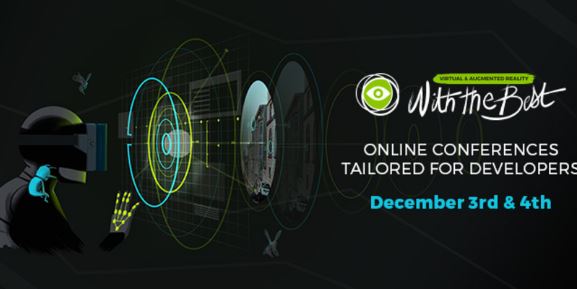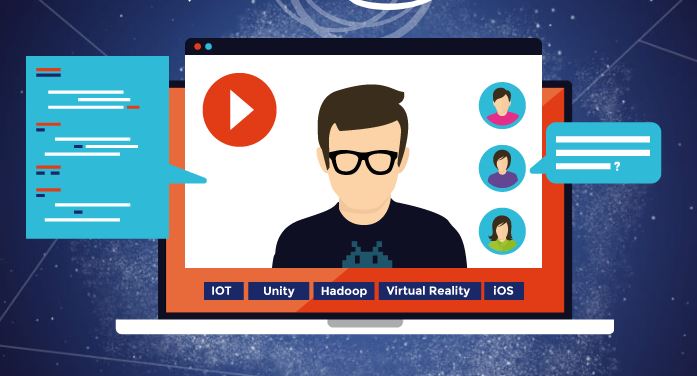The end of pivotal year 2016 for VR is nearing, and just before switching to even more crucial year 2017 for VR, a highly interesting online conference for developers summed up the current media situation and prepared for the next waves:
VR With The Best took place in the beginning weekend of December as a virtual conference platform: two days packed with lectures, demos, meetings and discussions – all organized in live online sessions and video streams on parallel tracks for 2 complete days; starting early in the morning for US pacific time / late afternoon in Central Europe until evening PST/midnight CET. The format resembles an online MOOC platform, but you do not deal with tutorials or academic course programs here, you go to a professional conference without even moving from your desk at home.

Topics and offers are comparable to any major developer conference on digital media and VR: general introductions and historical overviews, research developments and media theory, consumer products and distribution platforms, game engines and platform peripherals, content production and marketing, market research and distribution strategies, VR/MR/AR for games, films, internet and local-based installations, technological and social interaction, financing and business development, media awareness and social implications, state of the art and future outlooks.
Sessions are organized in slots for 40 minutes, where speakers present their topics and slides in live videos while the participants can use a parallel chat stream for comments and questions. Most presentations follow the established structure of PowerPoint presentations with Q&A, but there are also more performance-based presentations in form of improvised speeches with direct interaction between speaker and participants. Every session is recorded and made available in an online archive for 2 months right after live broadcasting.
A special highlight of this virtual conference platform is the feature of 1to1 sessions with the speakers: participants can book a personal slot for a 30-minute interview with the speakers of their choice, organized in a Skype-like video chat, where they can establish personal contacts, deepen their insights or start business negotiations right away. This outstanding feature makes the platform a speaker-centred experience, whereas the general forum activities and interactions between participants are less in focus here, especially compared to established MOOC experiences.

The programming as a whole presents an impressing line-up of renowned speakers and exciting topics. I had a very busy weekend to follow up all the presentations, starting with Google’s Noah Falstein for DayDream and View, passing to Jason Jerald’s VR Book and diving deep into WebVR programming right after that, just to move on with Unity assets and Unreal updates later. I learned about locomotion concepts and AI approaches from experienced speakers, and I got thrilled by Kickstarter activities launched by adventurous start-up companies for body tracking systems and haptic controls while bypassing Kinect controlled robots, physical audio solutions and high concepts for automation procedures in the workflow.
The level of communication was at the same time highly professional for experienced participants and fairly accessible for students and newcomers. Some presentations were a bit repetitive to balance these different levels. So, it may be helpful to introduce knowledge levels in the conference program to avoid redundancies and give a better orientation for speakers and participants.
Apart from established industry players’ showcases like Nvidia’s graphic pipeline and Microsoft’s Hololens products, there was also room for discoveries of niche players and newcomers, like the alpha version of the promising and impressively consequent Neos engine from Eastern Europe: an engine platform designed for VR from the scratch, delivering highly accurate physics and interaction features.
Due to media constraints of this online format, there was no possibility for direct experiences on-site like on traditional conference platforms, which can become a crucial source of information – especially for VR. But this disadvantage could be fairly compensated by more direct and personal contact opportunities for presenters and participants. And maybe the development of upcoming WebVR standards will help to expand this conference into a demo platform for even overcoming this last asset of conventions.
In any case, ‘VR With The Best’ delivered quite some inspirations and kept up an adventurous spirit at the end of a pivotal year for VR, which in the end could only prepare a more crucial year for VR to come.
All images from VR With The Best

